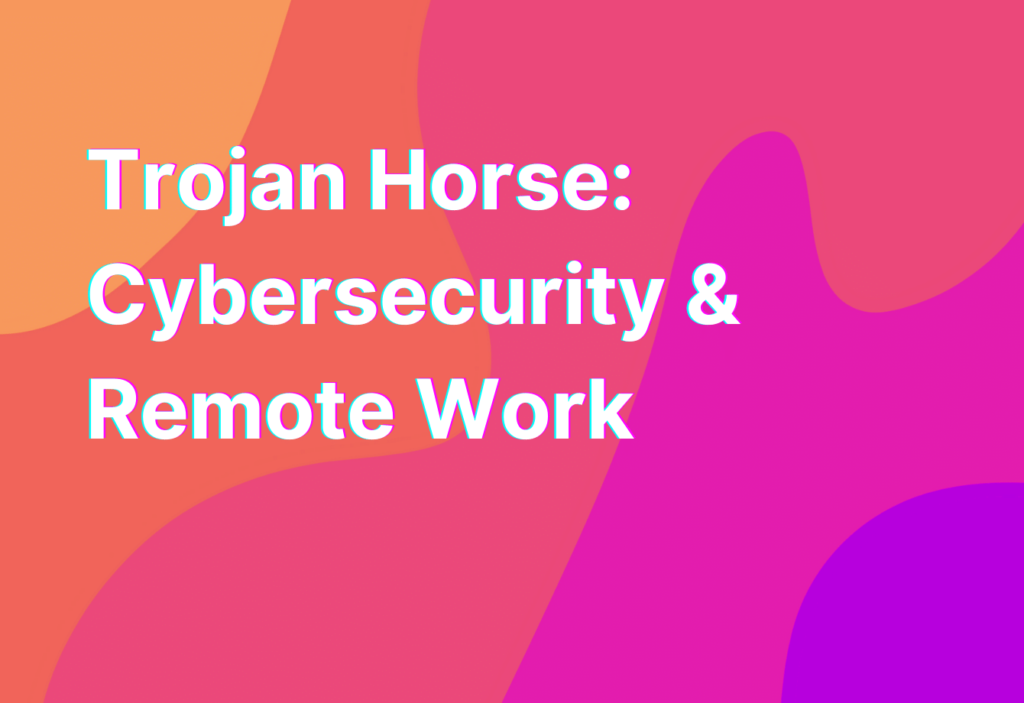Trojan Horse: Cybersecurity & Remote Work
Hey there, remote work warriors! It’s Ashley, your friendly neighborhood remote work advocate, here to talk about a topic that’s as sneaky as a Trojan horse: cybersecurity. As remote workers, we rely heavily on technology to stay connected and get our work done. But with great technology comes great responsibility, and it’s important to be aware of the potential risks and take steps to protect ourselves and our work.
What is a Trojan Horse?
Before we dive into the world of cybersecurity, let’s start with the basics. A Trojan horse, in the context of technology, is a type of malicious software that disguises itself as a legitimate program or file. Just like the ancient Greek story, where a wooden horse was used to sneak soldiers into the city of Troy, a Trojan horse in the digital world is designed to deceive users and gain unauthorized access to their systems.
Now that we know what a Trojan horse is, let’s explore how it can pose a threat to remote workers like us.
The Risks of Trojan Horses for Remote Workers
As remote workers, we often work on our personal devices and connect to various networks, which can make us more vulnerable to cyber attacks. Here are some of the risks associated with Trojan horses:
- Data Theft: Trojan horses can be used to steal sensitive information, such as login credentials, financial data, or personal files. Once a Trojan horse gains access to your system, it can quietly collect and transmit your data to cybercriminals.
- System Damage: Some Trojan horses are designed to cause harm to your computer or network. They can delete files, corrupt data, or even disable your system, making it impossible for you to work.
- Backdoor Access: Once a Trojan horse infiltrates your system, it can create a backdoor, allowing cybercriminals to gain remote access to your computer. This can lead to further attacks or the installation of additional malware.
- Spreading Malware: Trojan horses can also be used as a gateway to infect other devices or networks. They can silently download and install other types of malware, such as ransomware or spyware, on your system.
- Phishing Attacks: Some Trojan horses are specifically designed to trick users into revealing sensitive information, such as passwords or credit card details. They often masquerade as legitimate websites or emails, making it difficult to distinguish them from the real thing.
Now that we’re aware of the risks, let’s talk about how we can protect ourselves from these sneaky cyber threats.
Protecting Yourself from Trojan Horses
When it comes to cybersecurity, prevention is key. Here are some essential steps you can take to protect yourself from Trojan horses and other cyber threats:
- Use Antivirus Software: Make sure you have reliable antivirus software installed on your devices. It can help detect and remove Trojan horses and other malware.
- Keep Your Software Updated: Regularly update your operating system, web browsers, and other software to ensure you have the latest security patches. Cybercriminals often exploit vulnerabilities in outdated software.
- Be Wary of Suspicious Emails and Links: Avoid clicking on links or downloading attachments from unknown or suspicious sources. Be cautious of emails that ask for personal information or urge you to take immediate action.
- Use Strong and Unique Passwords: Create strong passwords for your online accounts and avoid using the same password for multiple accounts. Consider using a password manager to securely store and generate passwords.
- Enable Two-Factor Authentication: Add an extra layer of security to your accounts by enabling two-factor authentication. This requires you to provide a second form of verification, such as a code sent to your phone, in addition to your password.
While these steps can significantly reduce the risk of falling victim to a Trojan horse, it’s important to remember that no security measure is foolproof. That’s why it’s crucial to have a backup plan in case something goes wrong.
Wrapping Up
Cybersecurity is a serious matter, but that doesn’t mean we can’t have a little fun while learning about it. Remember, remote work warriors, stay vigilant, keep your devices protected, and don’t let those sneaky Trojan horses catch you off guard.
For more tips on remote work cybersecurity essentials, check out our VPN (Virtual Private Network) guide. Stay safe out there!


